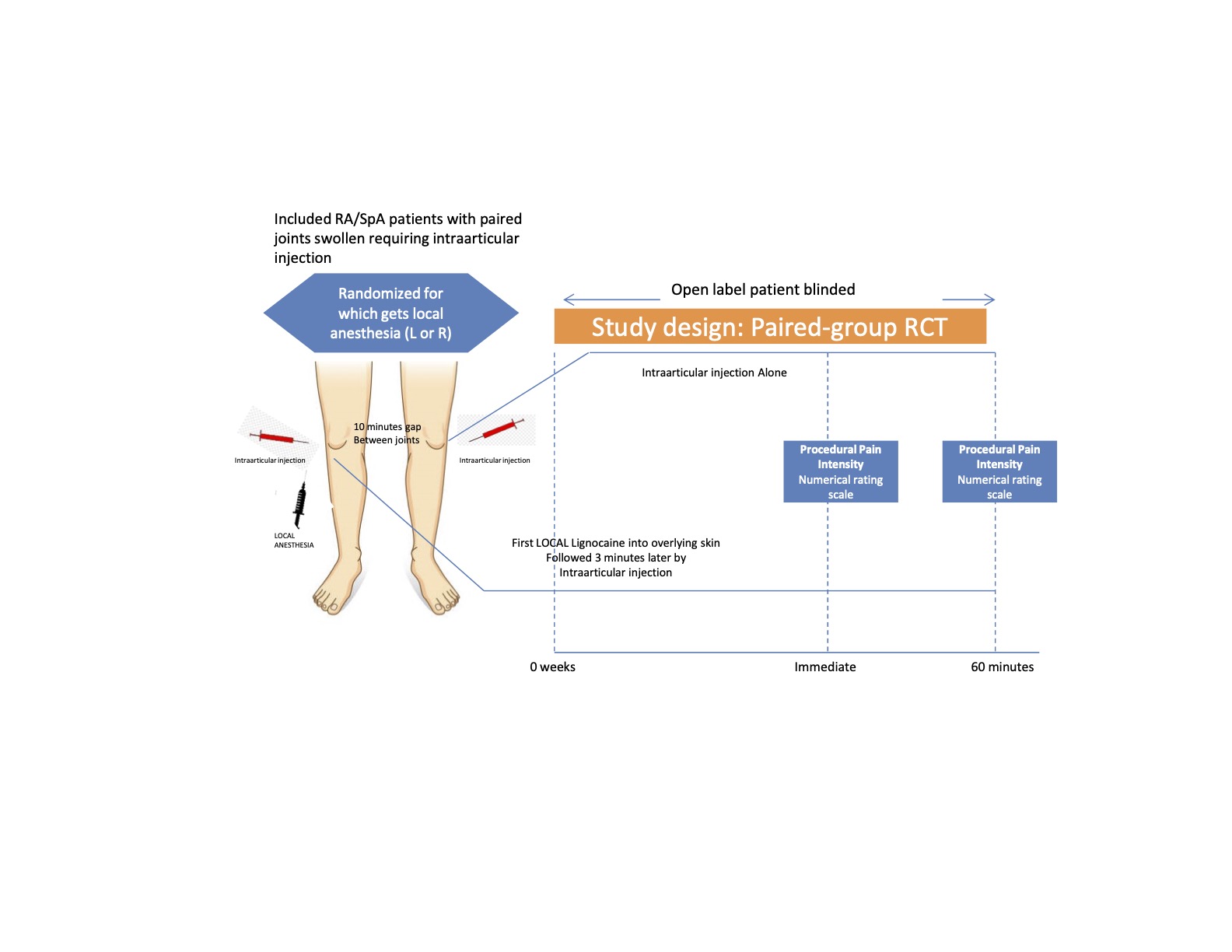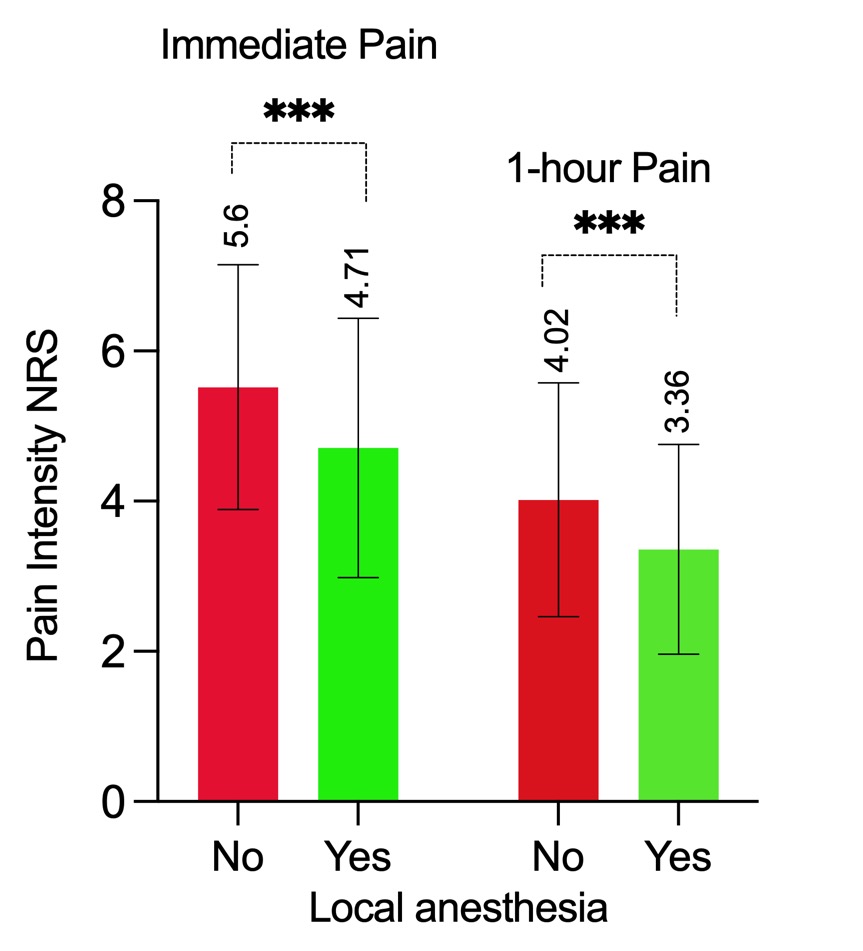Session Information
Session Type: Poster Session B
Session Time: 9:00AM-11:00AM
Background/Purpose: Intraarticular injections are commonly used both for diagnostic and therapeutic injections of glucocorticoids in patients with inflammatory arthritis. The procedural pain felt by patients may be an important factor for patients to consider future injections. Subcutaneous local anaesthesia given a few minutes prior may reduce the pain felt by the patient, however, has the disadvantage of pricking the patient twice. Once problem of studies comparing pain is that individual perception of pain varies, thus, we planned this study which included patients with two same (paired) joints swollen who were undergoing therapeutic joint injections.
Methods: This was an open-label (patients blinded) randomized controlled trial that included patients with rheumatoid arthritis or spondyloarthritis who had both (paired) medium-large joints swollen – either both knees or ankles or writs or elbows, and planned for therapeutic joint injections. The study design was that patients underwent intra-articular into left joint followed by right joint after a gap of 10-minutes. Whether the left or the right joint got local anesthesia was decided by using randomization (online software, serial permuted blocks). (Figure 1) Local anesthesia consisted of 5 ml lignocaine infiltrated in the skin and subcutaneous tissue using a 23-G needle. Intraarticular injections were given using a 10 ml syringe with a 21 G needle. Primary outcome was immediate procedural pain felt by the patient and secondary endpoints were 1-hour pain assessment, patient preference for future injections (after telling them which joint received LA) and complications. Pain was assessed using numerical rating scale. Paired t-test and Wilcoxon Signed Rank test was used to compare the intensity of pain. Trial registration number CTRI/2021/07/034777
Results: This study included 42 patients undergoing paired joint injections (84 joints). A majority of patients had rheumatoid arthritis (37, 88%), mean age (±SD) was 44.6 ± 14 years and 71% were females. The joints injected were knees (21 patients), wrists (14 patients), ankles (5 patients) and elbows (2 patients). There was a significantly lower immediate pain in the joint given local anaesthesia compared to that not given (difference -0.8, 95 CI -0.6 to -1.0) as well as significantly lower pain at 1-hour (difference -0.7, 95 CI -0.4 to -0.9). (Figure 2) A majority of patients (78.6%) preferred the procedure with local anaesthesia for future injections in their joints. There was no difference in complications of hypopigmentation or purpura nor in residual pain prick-site at 1-month. No significant differences were noted in pain by gender or age, nor by joint injected.
Conclusion: In this study with a unique paired design to obviate individual differences in pain, local anaesthesia of the overlying skin led to a definite but modest reduction (approximately 15%) in pain felt by the patient during intraarticular injection.
To cite this abstract in AMA style:
Shaji A, Dhir V, Prasad C, Naidu S, Sharma A, Sharma S, Ghai B, Jain S. Effect of Subcutaneous Local Anaesthesia Prior to Intra-Articular Injection: An Open Label, Paired-group, Randomized Controlled Trial [abstract]. Arthritis Rheumatol. 2023; 75 (suppl 9). https://acrabstracts.org/abstract/effect-of-subcutaneous-local-anaesthesia-prior-to-intra-articular-injection-an-open-label-paired-group-randomized-controlled-trial/. Accessed .« Back to ACR Convergence 2023
ACR Meeting Abstracts - https://acrabstracts.org/abstract/effect-of-subcutaneous-local-anaesthesia-prior-to-intra-articular-injection-an-open-label-paired-group-randomized-controlled-trial/


